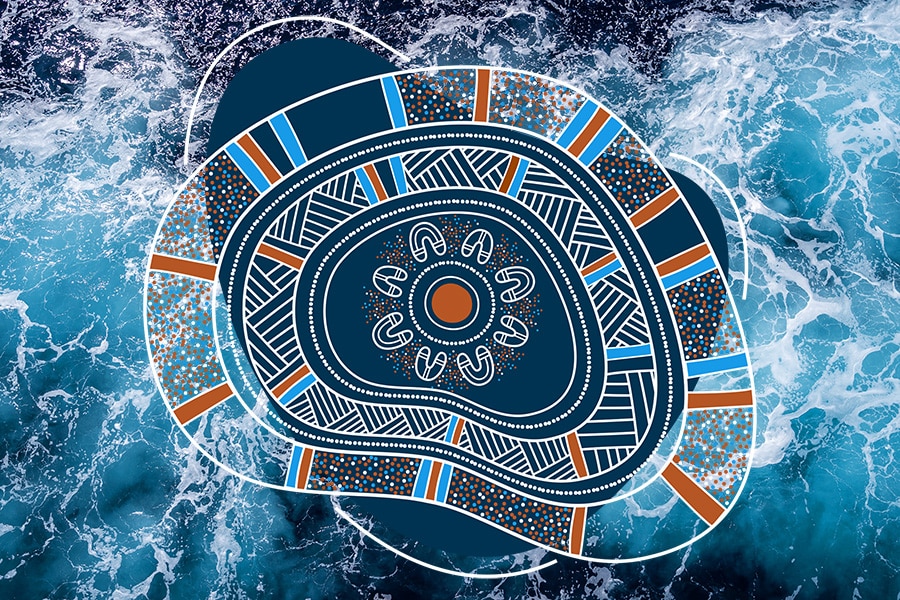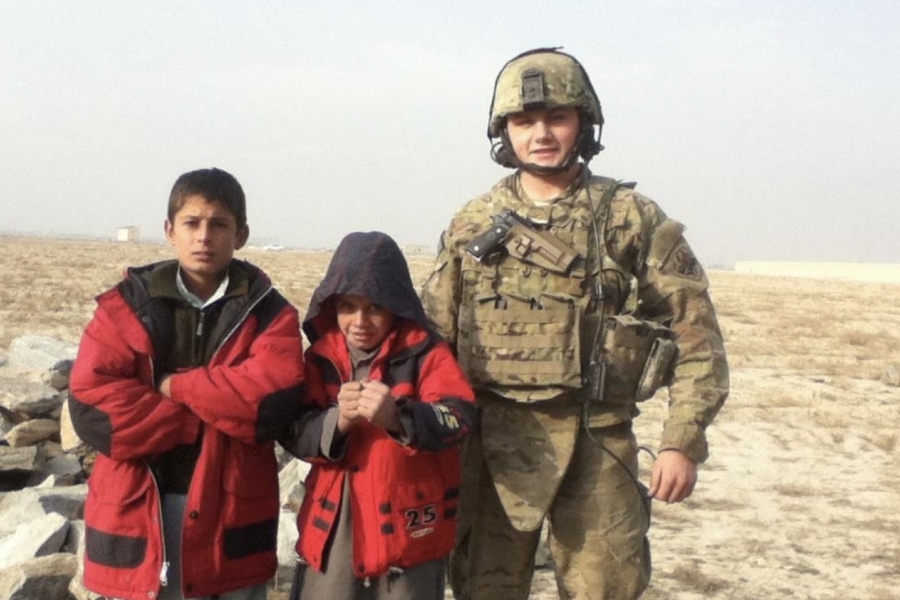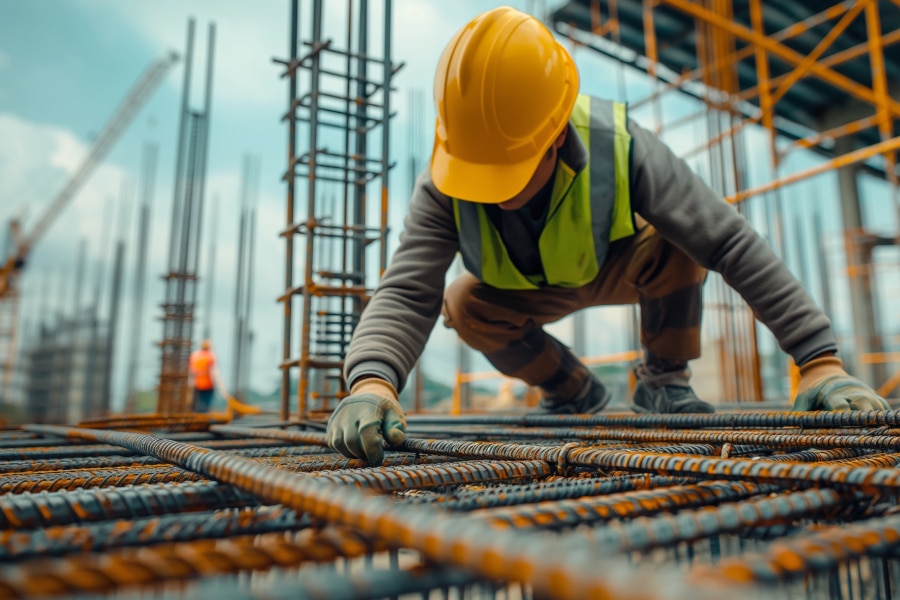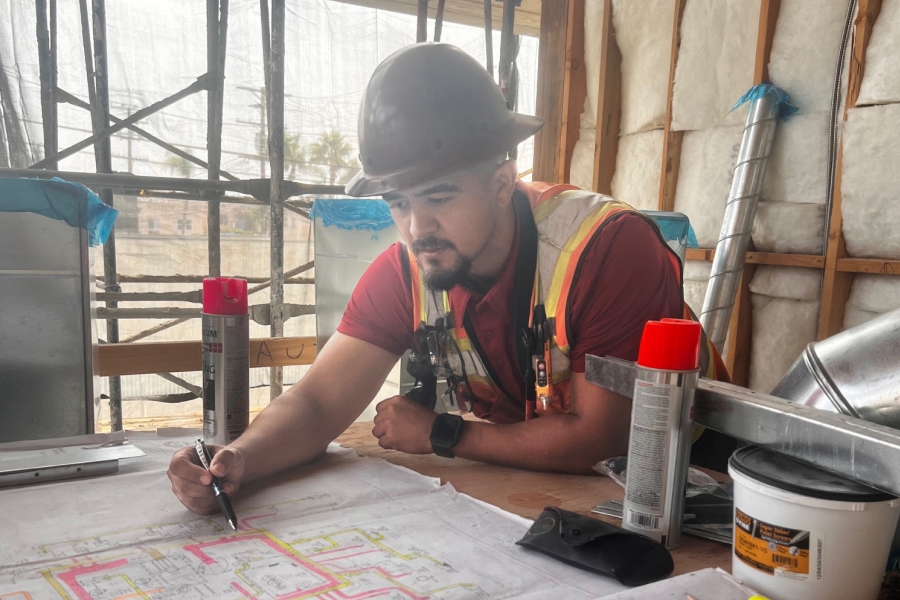Illustration by Danielle Leedie Gray
Each year, for one week in July, Australians are invited to recognise and celebrate the contribution and value of First Nations people across all communities, regions and sectors.
NAIDOC (National Aborigines and Islanders Day Observance Committee) Week is an opportunity to reflect, grow our knowledge and build our understanding of First Nations challenges and opportunities.
In 2023, the theme for NAIDOC Week is “For Our Elders.” Across each generation, Elders have played, and continue to play, an important role and hold a prominent place across communities and families.
Recognised as cultural knowledge holders, trailblazers, nurturers, advocates, teachers, survivors, leaders, hard workers and our loved ones, Elders bring to each of us the lens of how history and experience may be used to create, build and grow.
In the construction sector, older First Nations people are emerging as industry mentors and leaders, inspiring and opening the door to career pathways for younger Aboriginal and Torres Strait Islander employees.
Why is NAIDOC Week—and other events recognising Indigenous Australians—so important?
Aboriginal and Torres Strait Islander peoples hold distinctive rights as Australia’s First Peoples, set out in international law.
In 2009, Australia formalised its support to the United Nations Declaration on the Rights of Indigenous Peoples—which is committed to rebuilding relationships between indigenous peoples and governments around the globe.
However, Australians First Nations people remain among the most vulnerable individuals and communities in Australia.
The Australian Institute of Health and Welfare reveals that in 2021 an estimated 881,600 Australians are First Nations peoples—with 62 per cent of these living outside major cities. The Northern Territory has the highest proportion of Indigenous residents among its population—an estimated 31% (79,600 people) in 2021.
First Nations people and the construction industry
Every design and construction business in Australia works alongside and for First Nations Australians every day—whether your business is Indigenous-owned, employs Aboriginal and Torres Strait Islanders, partners with other Indigenous-owned construction businesses or delivers within communities.
According to the Australian Institute of Health and Welfare, the construction sector is one of the biggest employers for First Nations people, and Indigenous businesses across the industry are considered more likely than non-Indigenous businesses to employ Indigenous workers.
Compared with the average of all industries, the Indigenous employment rate is 1.8 times higher in construction (2016 Census, Australian Bureau of Statistics).
Construction industry employers have an important opportunity to build on its First Nations employment offering beyond labouring roles and into the full spectrum of offerings within the industry, from administration to project management, engineering, trades team leaders, business development and more.
Governments of all levels are also working to ensure the broader construction industry partners with Indigenous-owned businesses, employs and builds career pathways for Indigenous men and women, and builds cultural awareness and considerations into the communities the sector is delivering within.
Having a Yarn with Danielle Leedie Gray
For NAIDOC Week 2023, Built partnered with First Nations graphic artist and designer, Danielle Leedie Gray, to create original artworks and animations that visually represent each story published during the week. Collaboration, respect, and the spirit of reconciliation was essential to the project and Built didn’t miss the opportunity to have a good yarn with Danielle about her life and her work.
Can you tell us a bit about yourself and your journey into becoming a contemporary graphic artist and designer?
As a contemporary graphic artist and designer, I am a proud Bidjara and Wakka Wakka woman from South West and East Queensland, Australia. My creative journey began when I began exploring my great grandfather’s history and discovered he was part of the Stolen Generation, having to apply for an exemption from the Aboriginal Act. This was a confronting and emotional realisation, finding out about my family’s history and the struggles they faced. Conversations around our family history were never openly discussed, and I believe it was because of the painful trauma associated with it.
Despite all these challenges, my cultural identity and creative expression became my way to share stories and bring awareness to my family history and continue to educate non-Indigenous people.
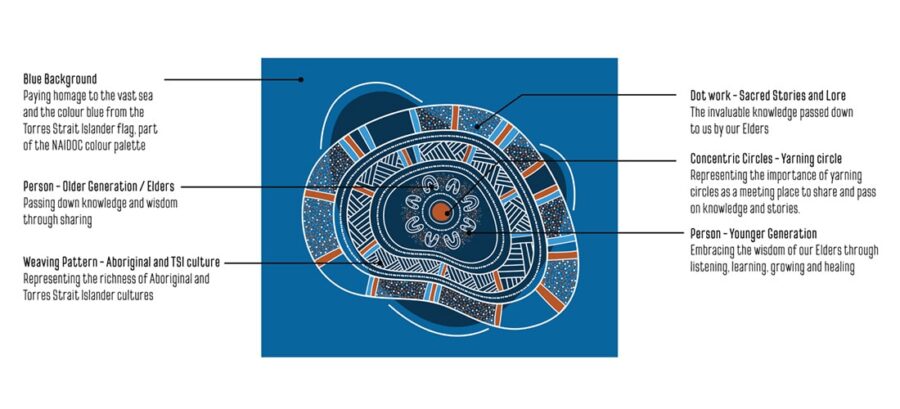
What does NAIDOC Week mean to you personally, and how do you celebrate it?
NAIDOC Week holds a special place in my heart as it offers a time for reflection, celebration and connection to my family and culture. My family and I attend local events that honour the occasion.
Thinking back, I remember my grandmother taking me to NAIDOC at Musgrave Park when I was young. Being there in that special moment, where our culture was amplified, and our traditions were celebrated was a truly unforgettable experience. I felt a strong sense of belonging and pride, which have continued to guide my cultural journey to this day.
Do you create work just for yourself, outside of commissions?
Absolutely. Whenever I’m not occupied with commissioned work, I find balance by painting with my children. I cherish this experience as it helps me to connect with them and culture in a special way.
I have accumulated a collection of fine art pieces that I gift to both charitable causes and individuals who have made an impact on my life. It’s such a fulfilling experience to use my art to bring joy and positivity to others, even with the most minor things.
What do you look for in a client and a brief?
My core principles in working with clients are purpose, openness, trust, and respect. I find great satisfaction in collaborating with people who are genuinely interested in learning about and embracing my culture and heritage. It’s my belief that everyone benefits from cultural diversity and by working together with mutual respect and openness, we can achieve more significant outcomes.
Therefore, I enjoy working with clients who are willing to actively engage with me and my culture. This relationship helps to ensure that you get the best out of my expertise, as well as create a positive experience that benefits both parties.
How does your creative process typically start?
To kickstart my creative process, I always seek out key phrases and visual inspirations from the client brief or meeting. I’m drawn to any descriptive patterns that emerge, as this helps to sharpen my understanding of what’s important to the client and the visual outcomes they’re looking to achieve.
Throughout my work, I have developed a creative method that I invite my clients to participate in. It’s a process that blends my creativity with my cultural heritage, ensuring clients are taken on an immersive journey relevant to both of us.
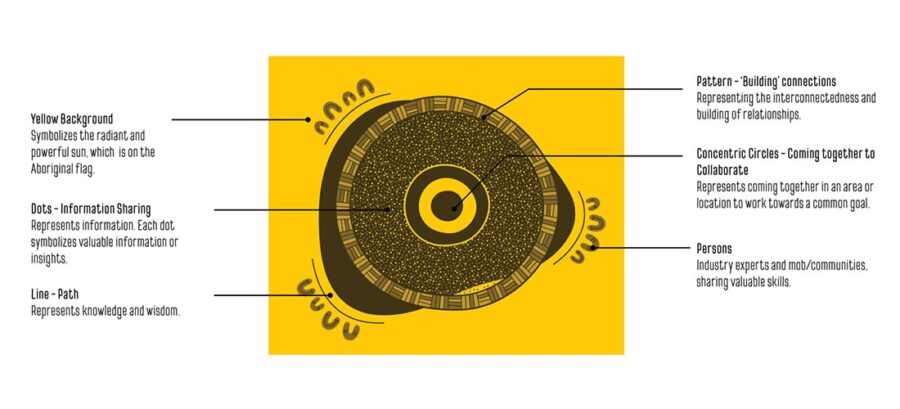
What are some aspects of your art that are unique to you and your culture?
As a contemporary First Nations artist, I find that certain symbols hold particular significance for example, the symbols of people gathering (depicted as a circle with c’s surrounding it), the traveling sign (three circles connected by three lines) and the emu footprint, incredibly meaningful, as they reflect themes of unity and progress.
One of my artistic strengths is paying attention to details, which is a beautiful thing, but can also be overwhelming at times. I feel this level of attention to detail is an important aspect of my artistic expression as it allows for precise interpretation of these cultural symbols and traditions.
What are your initial thoughts on developing 3 illustrations for Bluebeam’s celebration and recognition of NAIDOC Week 2023?
I was thrilled when I received a brief that presented a slightly different focus and outcome than what I’m used to. One aspect of being a creative professional that I enjoy is seeing how other creatives can push my work in new directions. For this particular project, I’m especially excited as it involves animation.
How can people and organisations support First Nations artists?
To support First Nations artists, it’s important to continue commissioning our work, not just during movements, but as part of a broader engagement with cultural diversity. Sharing our services throughout your networks can be a powerful way to amplify our work.
Our work not only carries cultural depth and meaning, but it also makes a significant economic impact in the communities which we belong to. By supporting our work in these ways, you are not only investing in high-quality art, but you are also actively making a difference within First Nations communities.
What guidance would you give to business owners and leaders that want to engage with First Nations communities and create a plan within their own organisations?
Reconciliation Action Plans offer an excellent starting point for individuals & businesses seeking to embark on a journey toward reconciliation. It’s a framework that recognises the need to reconcile with First Nations people, while setting a standard of accountability for creating significant, lasting change.
Small but significant steps can also be taken by individuals and businesses to become more culturally aware, such as taking the time to acknowledge or celebrate significant events like Reconciliation and NAIDOC Week. Educating yourself and staff on First Nations people and culture is another essential component. By learning more about our history and our ways of life, you gain an appreciation of the richness of our culture – giving businesses and individuals a solid foundation of knowledge that can be built upon.
When we all take these steps together, we can continue to move towards a cultural tapestry that supports and honours First Nations voices and experiences, fostering deep understanding and respect across all communities.
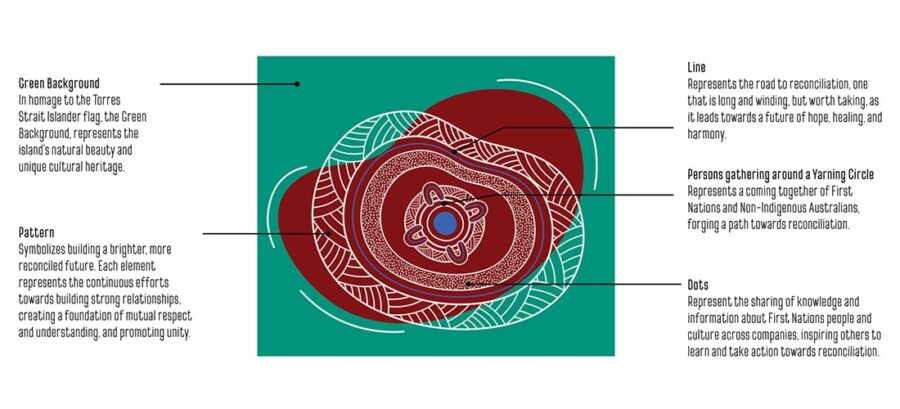
Is there anything else you’d like to share with people who work in the design, engineering and construction industries?
Engaging with First Nations businesses and suppliers is an effective way to support and amplify our voices. If you’re unsure where to start, consider connecting with your network, particularly those that have a Reconciliation Action Plan, as they may have a network established. It’s essential to do the due diligence and support authentic First Nations art and craft.
Participating in NAIDOC events is a great way to celebrate and engage with Indigenous culture. Check your local council’s website or social media platforms for information on upcoming events or visit the National NAIDOC Week website for updates.
Supporting First Nations artists and businesses and participating in cultural events are powerful steps we can all take in promoting authentic, positive representations of First Nations culture. By embracing First Nations voices and experiences in our daily lives, we can learn, grow and promote a more inclusive and respectful country.
Beyond NAIDOC Week
Discussion about the history, culture and achievements—alongside the future, the challenges and the opportunities—of First Nations people should not be simply boxed into one week each year.
Instead, the week should be used to open discussions about change—in 2023, perhaps focus on how to build relationships with Elders and older Aboriginal and Torres Strait Islanders in ways that support younger First Nations people and their self-determination.
In your construction business, consider how you are supporting and building career pathways for Indigenous Australians. Introduce ways to partner with First Nations businesses, consider how you are engaging on Country and with Aboriginal and Torres Strait Islanders in the communities you are delivering across.
Visit the following sites for information about and beyond NAIDOC Week:
NAIDOC Week events
The official database of NAIDOC Week events taking place across the country, searchable by postcode.
Supply Nation: Australia’s leading database of verified Indigenous businesses.
Indigenous Business Australia: IBA was created to assist and enhance the economic development opportunities of Aboriginal and Torres Strait Islander people across Australia.
ANTAR: ANTAR is a national advocacy organisation dedicated to justice, rights and respect for Australia’s First Nations Peoples.
The Indigenous Literacy Foundation: Working to increase literacy levels amongst Aboriginal and Torres Strait Islander communities in remote areas of Australia.
Empowering First Nations
How Wamarra is Revolutionising Careers in Construction

